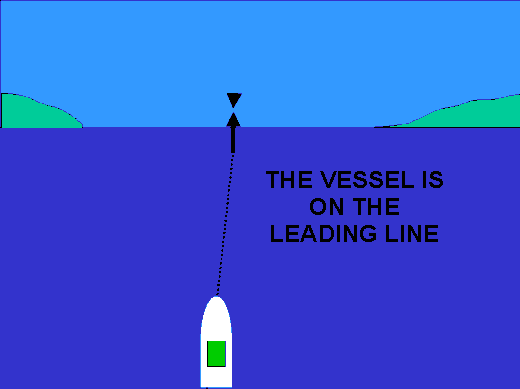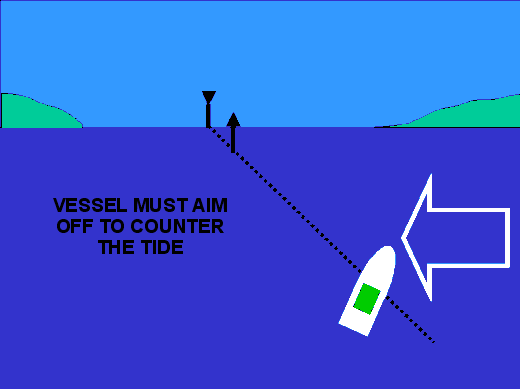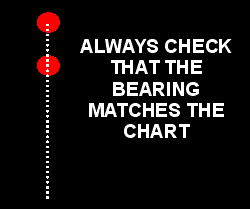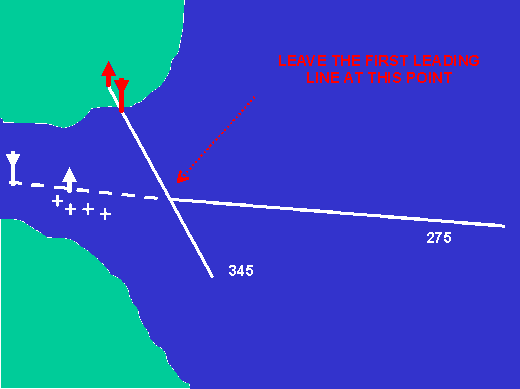Most harbours have some system to make entry easier. This may range from a few small posts in an out of the way marina to major beacons and lights in large ports.
In all cases their aids to navigation will be marked on the correct scale charts and they will be listed in the port entry information in the Almanac or pilot book. A prudent navigator will study these publications for clues about to make the port entry easier.
It is always worth remembering that the local seamen will have created some sort of marks that make life safer and easier when it comes to dealing with the particular problems of the area.
Leading Lines
Virtually all harbours use leading lines of some type, they may be lit or unlit, obvious or requiring local knowledge to identify them. The pilot information is invaluable in some of the smaller harbours. It will normally give at least a brief description of the visual appearance of the beacons and may even have photographs to assist in identification.

Where they are particularly useful is when there are cross currents on the harbour entrance or if there are hazards outside the port.

 |
When using leading lines or lights, it is essential that the bearing be checked to see if it matches that given on the chart. It is very easy and tempting, when you are tired, and conditions are difficult, to find the first lights that appear correct, then head in to harbour. That is the time when extra care should be taken, heaving too and waiting a few minutes to verify the marks is always time well spent. |
The Chart
There are many situations where the vessel must follow a leading line, then leave it for another. In this situation the leading line will be drawn on the chart, but at the point where the vessel should leave the line, the line is marked with a dashed instead of a solid line. On Chart 4D follow the leading line of the radio mast and church spire across the Swashway to 46°23.7'N 05°59.9'W.
When the bearing is written on the chart next to a leading line, it is always a true bearing (the variation may change over the lifetime of the chart), as seen from seaward.

Sailtrain.co.uk is free to use, but if you feel you would like to contribute to the running and development costs you can donate via Paypal:
Additional Resources:

